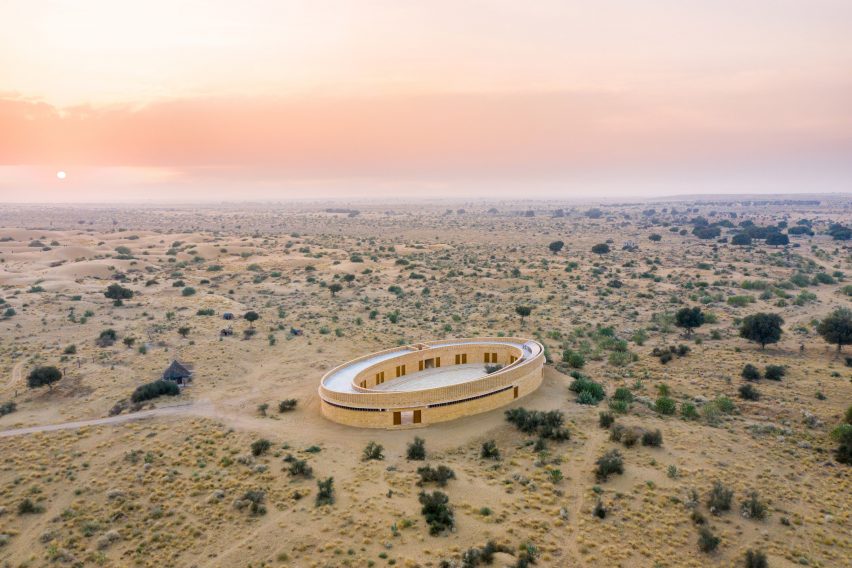
🏫 Beautiful eco-school protects students from harsh desert heat
In Jaisalmer, a city in India, students have to brave scorching temperatures to attend class. A new school, the Rajkumari Ratnavati Girls School, with a smart design keeps the school and its students cool without air conditioners.
Share this story!
Female literacy ranks below 40% in the north-western city of Jaisalmer. However, the staff at a new eco-school plans on changing that. Usually, when students attend school they have to withstand temperatures of 45 degrees celsius (113 degrees Fahrenheit). The new school has been designed to keep cool without air conditioners.
Designed by New York based-architect Diana Kellog, the school hosts over 400 students between four and 16 years old. Due to the school's unique oval structure, the students can study in peace without being distracted by the heat or the regular sandstorms.
“As a female architect designing for women, I looked at feminine symbols across cultures and specifically symbols of strength,” Kellogg told Dezeen. “I ultimately landed on this oval shape that is representative of femininity and resonated with me as the formulation of infinity. I knew I wanted to do a building that simultaneously blended and grew out of the natural landscape, much like the Jaisalmer sandstone.”
In the middle of the school is a courtyard and between the outer and inner walls are the classrooms.
“I wanted the design of the school to provide shading for the girls in the courtyard,” Kellogg said. “The ellipse shape seemed the most natural way to do this.”
On the school’s rooftop, there are solar panels that both power the building and provide a shading ceiling. Geothermal energy systems keep the place cool and lime-plastering on the inner walls keeps it insulated. Not only that, water harvesting systems collect and recycle rainwater all over the school.
Euronews.green writes that “jalis (perforated lattice stonework) protects students from the sandstorms that whip through the area while allowing natural sunlight in.”
The school was constructed by local builders who used local sandstone. This both benefited the sustainability of the building but also the local economy.
Picture: Vinay Panjwani via Dezeen
By becoming a premium supporter, you help in the creation and sharing of fact-based optimistic news all over the world.


